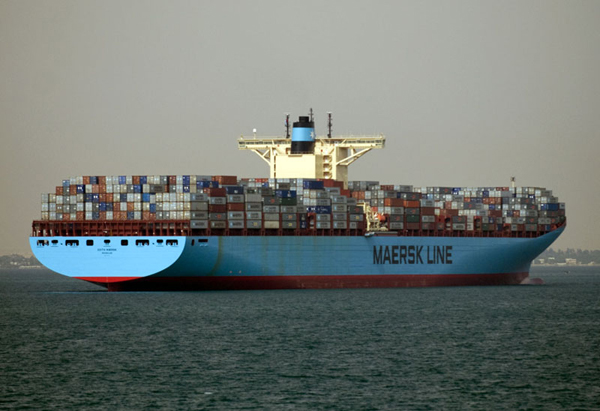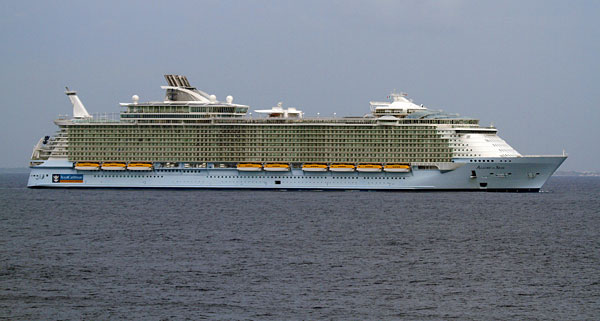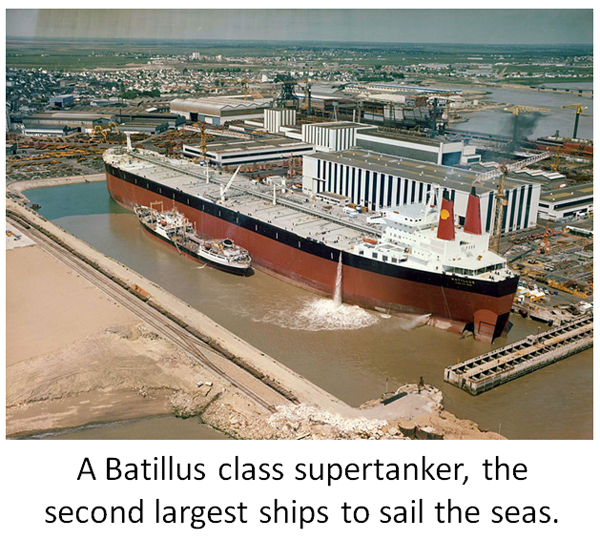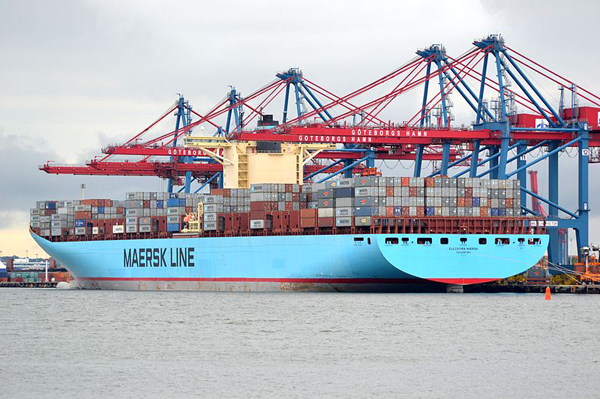The World's Largest Ships
by Andrew Boyd
Today, a new breed of big. The University of Houston's College of Engineering presents this series about the machines that make our civilization run, and the people whose ingenuity created them.
She was ready to go in 1979, but her owner decided he didn't want her. Others were waiting in the wings, however. A nip here, a tuck there, and she reemerged as the Seawise Giant, an oil supertanker and the world's largest ship. Her deck covered more area than six football fields. End to end, she was just over 1500 feet — longer than the Empire State Building is tall.
It's difficult to pinpoint any one particular event that led to the emergence of supertankers. Generally speaking, the larger the ship, the less expense per barrel of oil moved. But other factors than shipping costs come into play. The larger a ship gets the fewer ports it can squeeze into. When a ship becomes too large it can't navigate important waterways. The word Suezmax refers to the dimensions of the largest ship that can fit through the Suez Canal, the important route linking Europe with the oil rich countries of the Middle East. Historically, the surrounding region's been politically unstable, and in the late sixties and early seventies the canal was closed. With oil carrying ships forced to travel around the continent of Africa, supertankers became economically viable.
A host of supertankers were launched in the late seventies. But by 1980, building had come to a halt. The economic conditions that led to the rise of these seagoing behemoths disappeared as the Suez Canal reopened and oil prices plummeted. Most of the aging tankers have since been dismantled and sold for scrap. The Seawise Giant was taken out of service and broken up in 2009. It was the end of an era. But it was also the beginning of another.
The largest ships sailing the oceans today no longer carry oil. Given that fact, you might guess that ships carrying coal, ore, or other dry bulk goods have taken their place. But that's not the case.
Today's longest ships carry brightly colored cargo containers — beneath deck, on top of the deck — wherever there's empty space. Filled with anything from tennis balls to blue jeans, the biggest container ships aren't quite as long as the seventies era supertankers. At 1300 feet, they're a bit less than 90 percent the length of their forebears. But they're still breathtaking to witness.

And there's another class of ships quickly catching up with their container laden cousins — passenger cruise ships. Royal Caribbean's Oasis class ships — the first of which had her maiden voyage in late 2009 — measure in at 1200 feet, just a hundred feet shy of being the largest seagoing vessels in the world.

Some day economic conditions may once again usher in an era of ultra large supertankers. But for now, containers and pleasure-seeking passengers are leading the push for a new breed of big.
I'm Andy Boyd at the University of Houston, where we're interested in the way inventive minds work.
(Theme music)
Notes and references:
The Seawise Giant took on a number of names during her lifetime. See https://en.wikipedia.org/wiki/Seawise_Giant for more information.
While the largest container ships as of November 2012 are longer than the largest oil tankers, tankers are still the largest ships as measured by the total weight they can carry when fully loaded.
In the early 2000s four TI class supertankers were built. At 1250 feet, they were longer than the largest passenger ships, but still smaller than the longest container ships.
History of the Oil Tanker. From the Wikipedia website: https://en.wikipedia.org/wiki/History_of_the_oil_tanker. Accessed October 30, 2012.
List of the World's Longest Ships. From the Wikipedia website: https://en.wikipedia.org/wiki/List_of_world%27s_longest_ships. Accessed October 30, 2012.
The picture of the cruise ship is by John Lienhard. All other pictures are from Wikimedia Commons.
This episode was first aired on November 1, 2012

